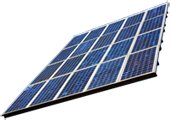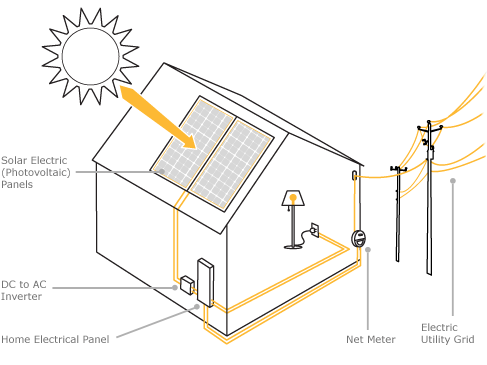- Array of solar panels that creates direct current electricity.
A series of panels (normally 8 to 20) are linked together to create a system whose size is measured in kilowatts (kW), with a typical solar electric residential system being 2 to 5 kilowatts in size.
For an array to be efficient, panels need to be oriented so as to receive the greatest amount of direct sunlight during the peak hours of the day, typically from 9 am to 3pm.
An optimal installation is flush mounted on a south facing, un-shaded roof, but other orientations work as well.
A site evaluation is important to determine the effectiveness of any solar array.
- Inverter that changes the power from DC to AC
From the rooftop solar electric array, direct current electricity travels to an inverter.
The inverter changes the direct current (DC) to alternating current (AC) and feeds that power to the main fuse box.
- Net meter that links your solar system to the utility grid
Usually on the outside of your home, you have a conventional electric meter installed by your utility company that measures how much power you consume and determines your monthly electric bill.
When you install a solar electric system, the utility company replaces that meter with a new net meter free of charge.
This net meter spins both directions, measuring the electricity you produce as well as the electricity you consume from the utility, so your electric bill is based on the net difference.
- Monitor that allows you to watch your system work
This small box attaches to your solar system and your internet connection.
It feeds power generation data to a web server, allowing you to track your own system output. Not all monitors connect to the Internet.





